Editor’s Note: This post is from the PC800 UK forums and was written by Spacetiger (otherwise known as Jerry). I have copied it over here because I thought it valuable enough to preserve in case that forum ever goes away.
All this time apart and I never measured the spring rates of the stock shocks…
I have to get this done before I button things up, so it’s down to the gym
equipment.
The PC800 has 2 different rear shocks; I have not seen any other bike with this
kind of set up, so I was curious what it would look like. I know most PC
owners out there are not into this kind of fiddling with their PC, so it this is
mostly for Fred and Doug and a few others out there with farkle curiosity.
Note: The pics are up loaded 1 to 7, but may not display this way.
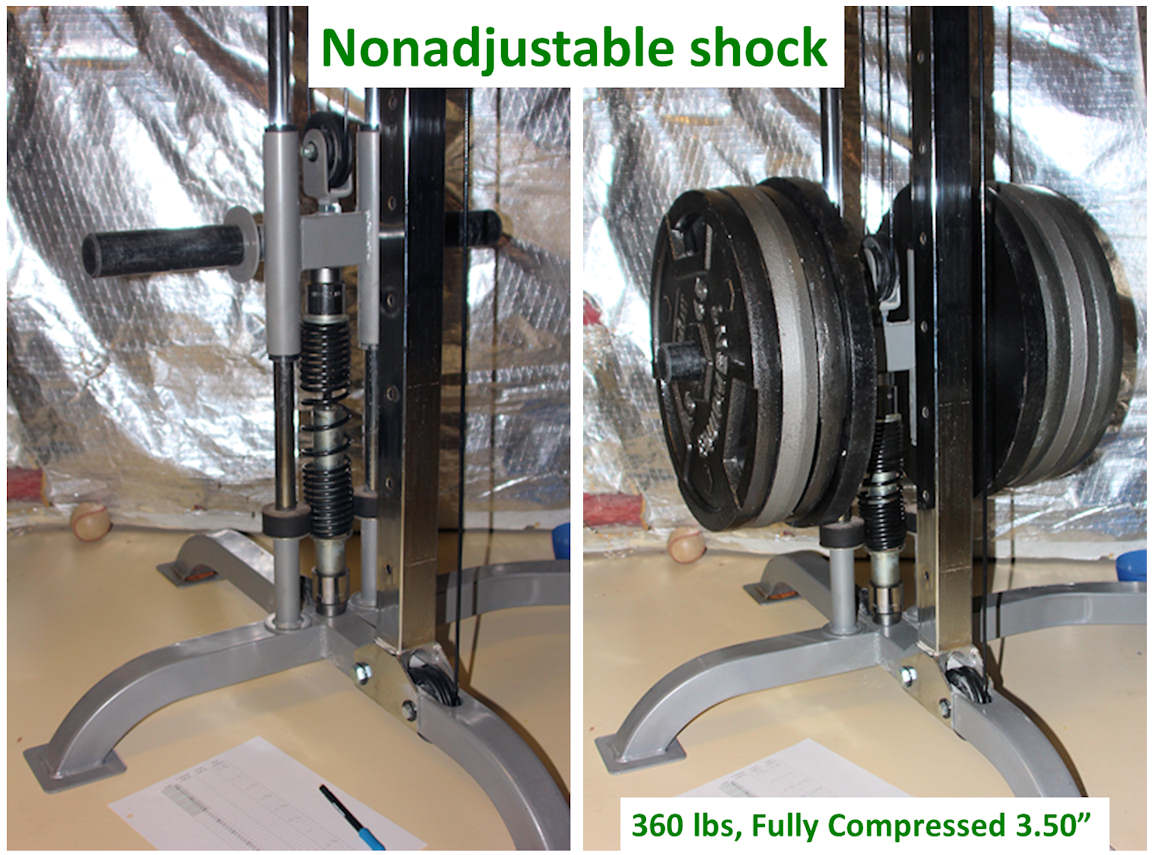
Pic 1: Pre and post-test configuration for the non-adjustable Showa shock; 360
lbs. fully compressed the shock 3.50″
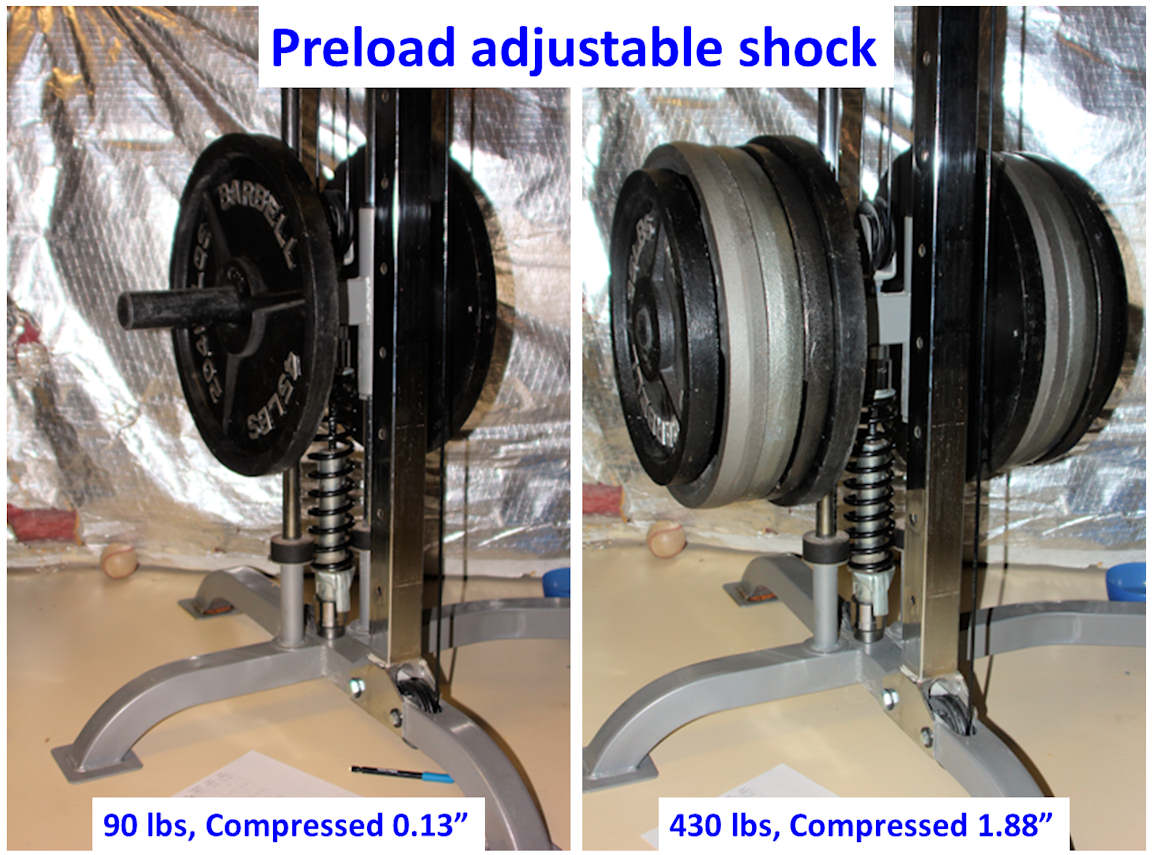
Pic 2: Pre and post-test configuration for the preload adjustable Showa shock;
I loaded 430lbs and only compressed the shock 1.88″! There was 2″ more to go
but I couldn’t put any more weight on.
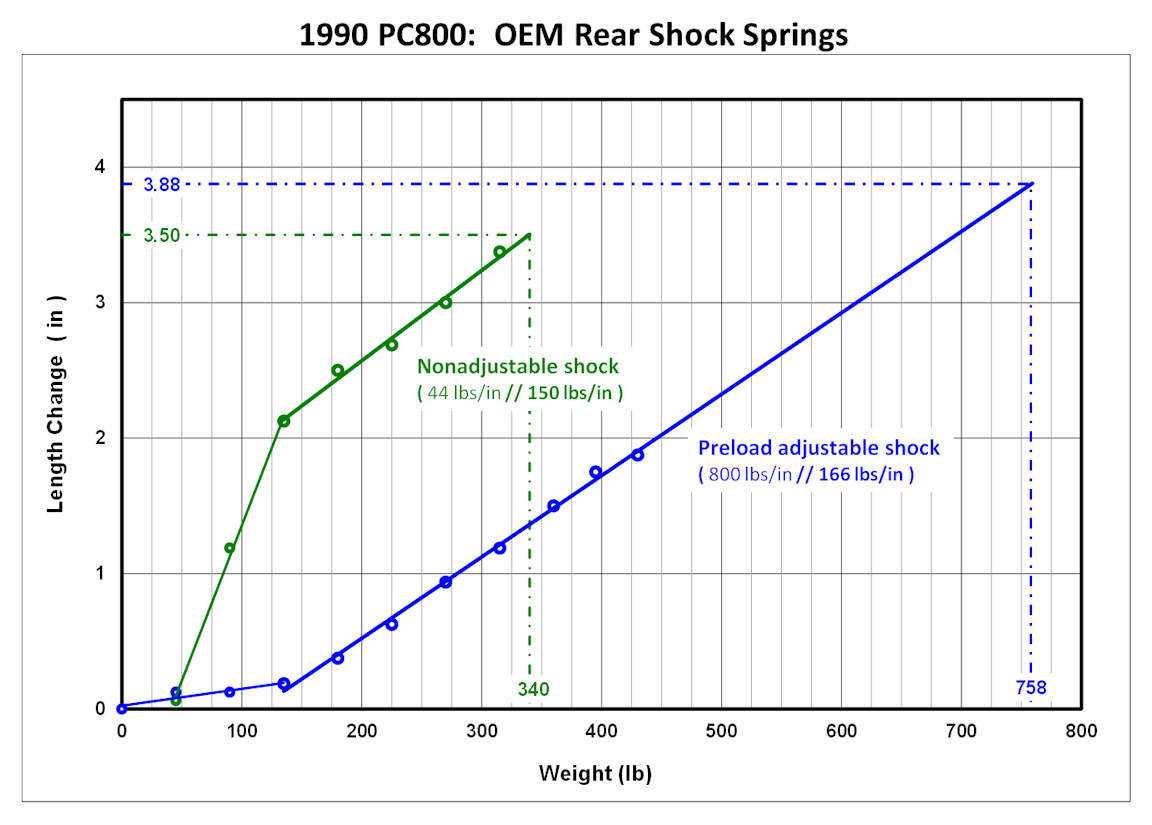
Pic 3: [Surprising] test results; The adjustable shock spring carries the load,
the fixed shock functions like a booster spring. Now it makes sense why they
only have a preload adjuster on one shock. Its a bit of a pain to get to the
shocks with the rear trunk, so the adjustable shock is on the left and the
single muffler on the right.
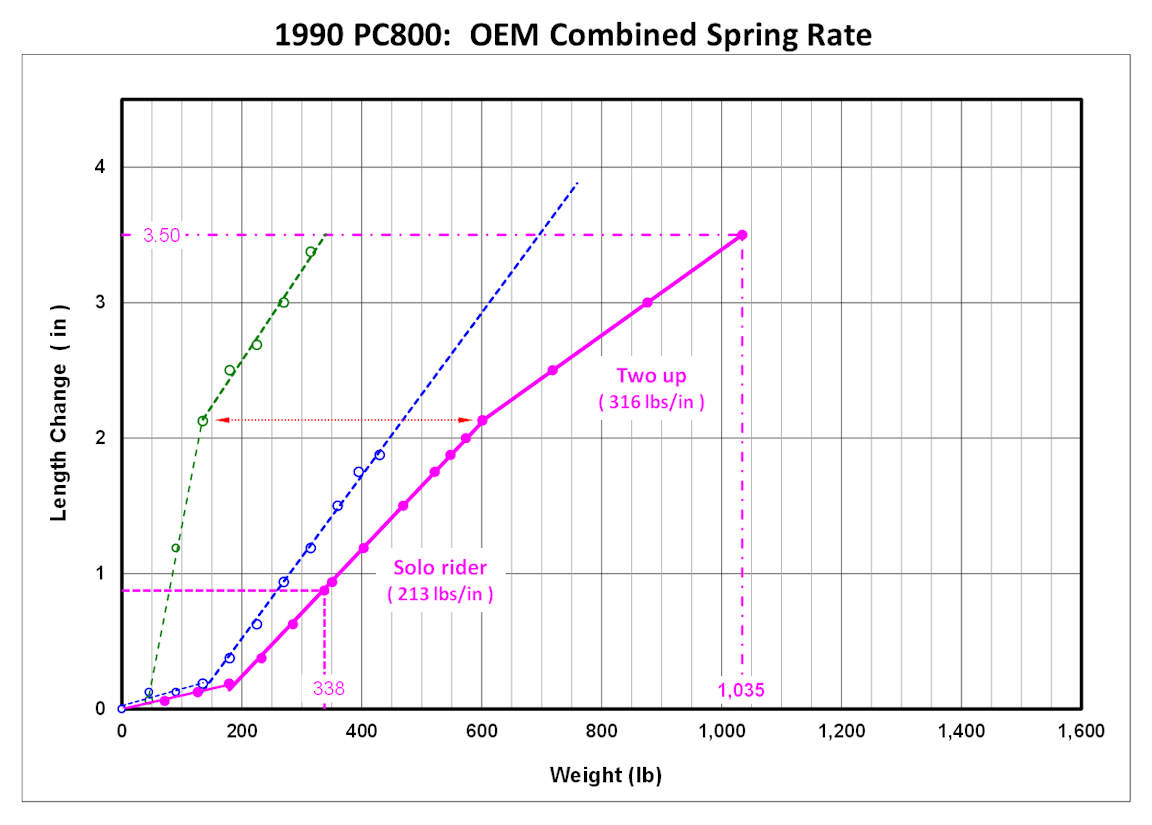
Pic 4: Shows the difference between PC800 and 86/87 VT700 (and 88 VT800) swing
arm. They are the same length but the cross brace is placed further back in the
PC800 swing arm. I believe this is done because of the differences in the shock
loading. In the VT swing arm, the shocks are both adjustable, so they can be
set equally and not impart much of a twisting load on the swing arm. The cross
brace is important because the 17″ wheel and modern radial tire touches the PC
cross brace, so I had to get more clearance hence the need for the VT700 swing
arm. The VT700 swing arm has a 3 bolt pattern vs. the PC with a 4 bolt, so I
have to swap the final drive out. I had been running a VT1100 final drive to
lower the RPM. The VT700 final drive has the same drive as the PC… but the
86/87 VF700C final drive is a 3 bolt set up and is geared like the VT1100, so I
will use the VF700C final drive (after swapping the input pinion gear with the
VT700) and 86 VT700 swing arm. Clear as mud?
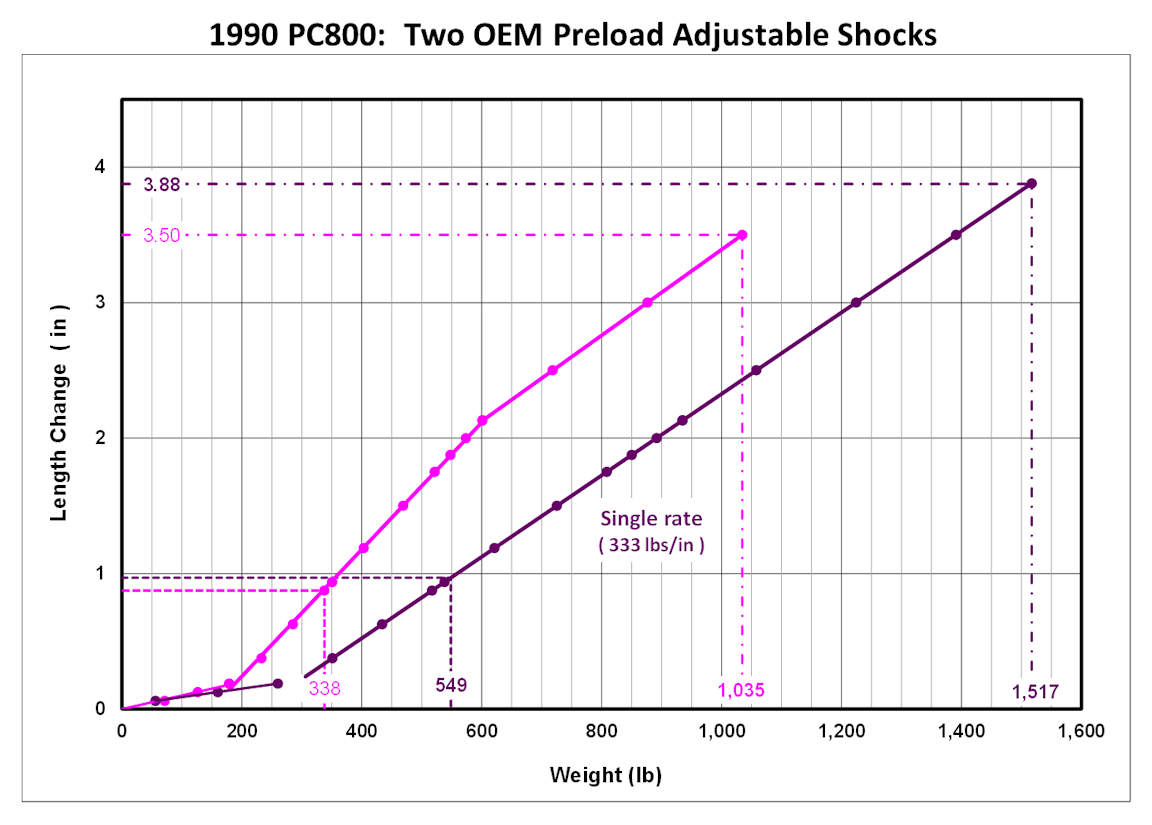
Pic 5: The magenta line shows the net effect of the 2 springs. You can see the
adjustable shock (blue line) is the stronger spring but there is some clever
engineering here. The magenta line has 3 linear portions; the first shows
little movement with approaching 200 lbs., then transitions to the 2nd linear
portion. I believe if you are setting your preload correctly you will be in
this region as depicted by the dotted line in the lower left. The bike wet
weight is close to 600 lbs. Add a rider and stuff in the trunk and it’s not
hard to imagine at least 338 + lbs. on the rear. Then, the 2 springs function
at a 213 lb/in rate till about 600 lbs. There, the combined rate increases to
316 lbs./in due to the booster spring kicking in. This looks like the two up
rider range. The fixed shock tops out at 3.5″ of travel, so the max load the
two shocks can carry is 1,035 lbs. You can dial up max preload in the left
shock and increase the max about another 100 lbs. Clever engineering packaged
for the intended purpose of the bike… but some of us have notions of trying to
make this a light touring bike, so a more aggressive riding envelope will have
to be accommodated.
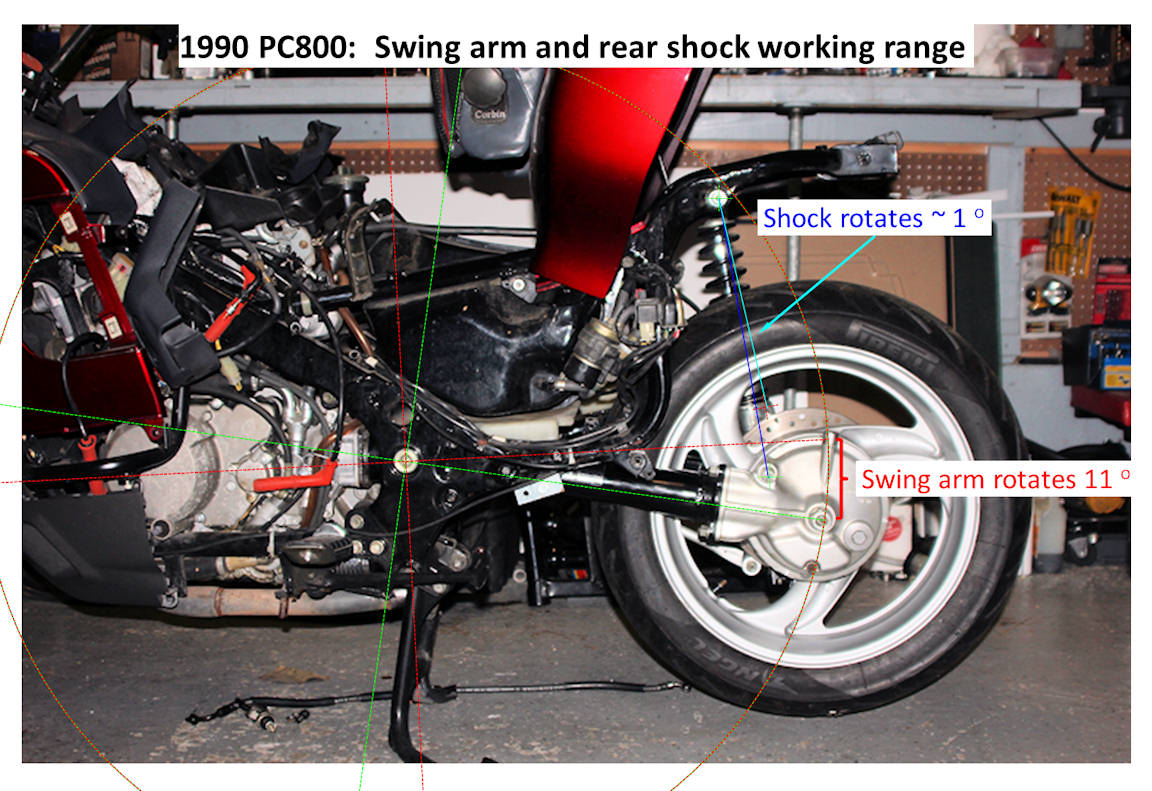
Pic 6: Some PC riders have swapped out the fixed shock with another adjustable
PC shock. This pic shows the difference between two adjustable and the stock
shock configurations. The dual adjustable has only 2 linear rates. The
[longest] second rate is 333 lbs. /in rate over about 3.5″, so it has
considerable more capacity. But, more importantly, it compresses less for a
given load, so the rear of the bike will stay up and maintain good rake/trail
numbers for better aggressive riding envelope even with 2 up and a full trunk.
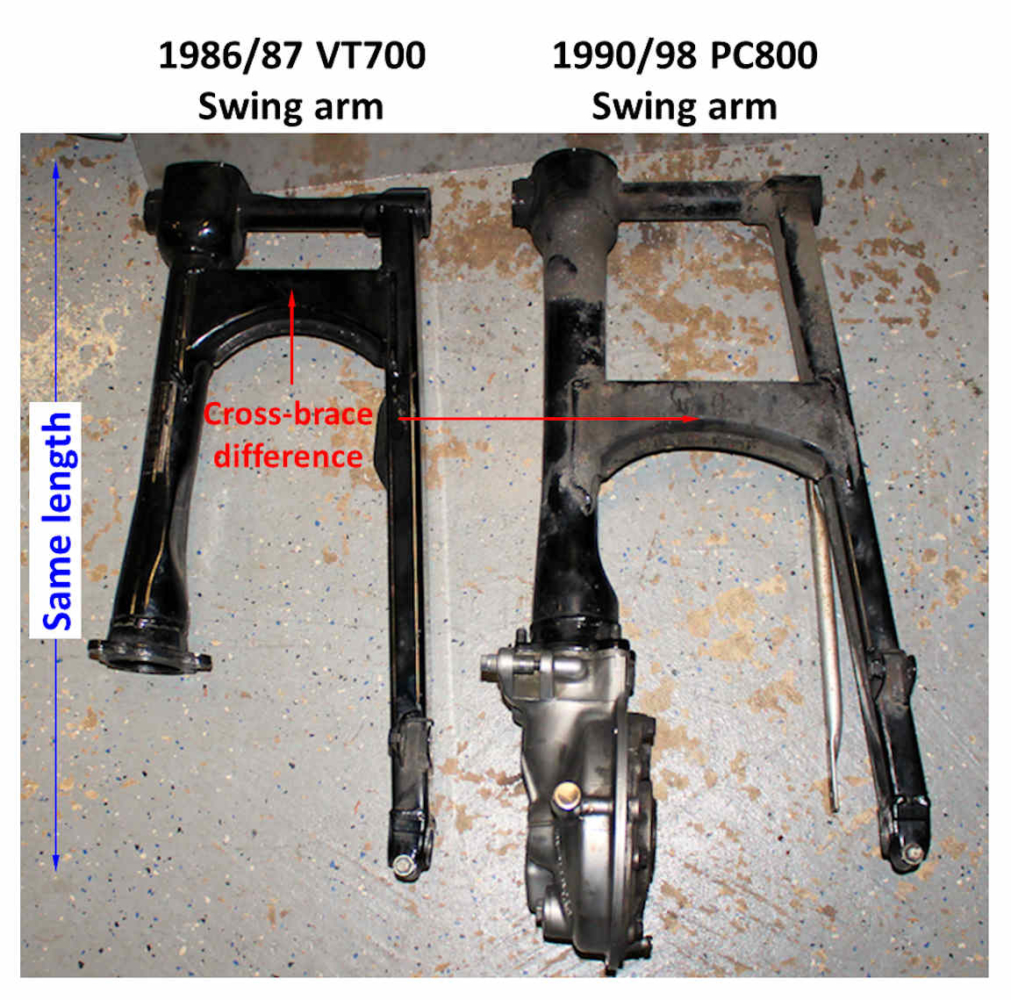
Pic 7: This pic shows the working range of the shocks and swing arm. The near
vertical alignment of the shock through its range of motion (~1.5 degrees) shows
it is carrying the load differently than bikes designed with larger rear shock
mounting angles (more linear), so the increased capacity is a welcome addition.
Jerry
